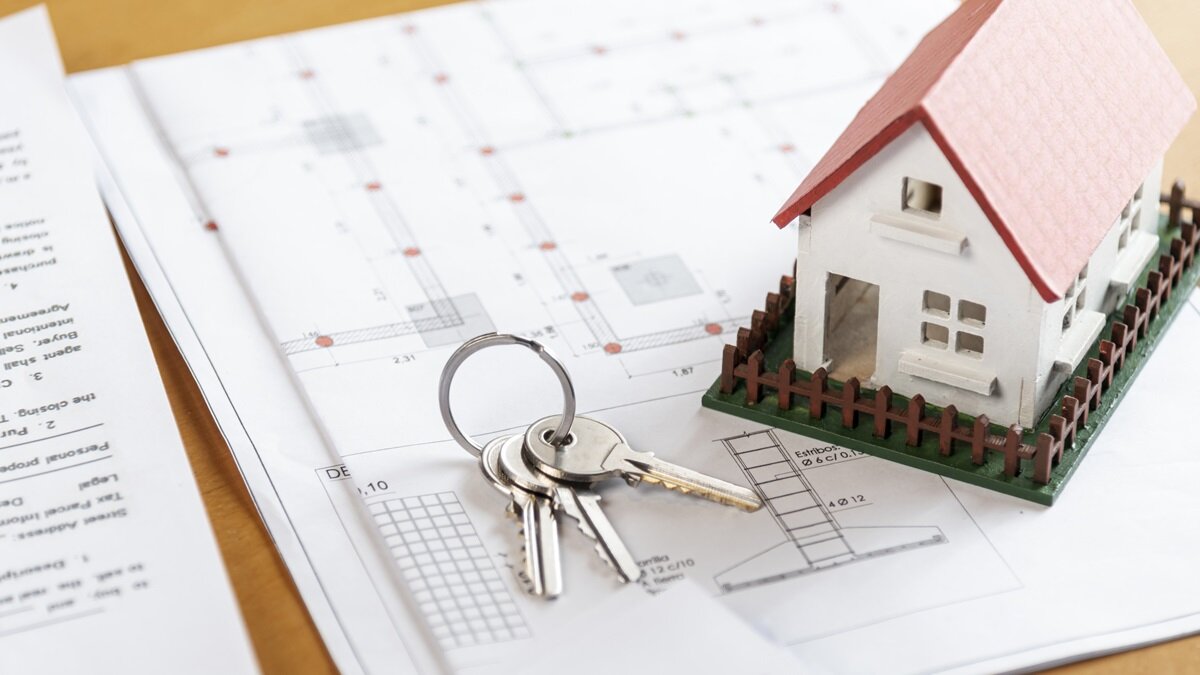All home buyers hope for smooth sailing when they purchase a property, but not everyone can be so lucky. The transaction isn't done until the fat lady sings – that is, settlement is complete and ownership is officially transferred.
Unfortunately, delays – and even cancellations – can occur and they can be costly. Whether it's a paperwork mishap, financial issue, or a problem with the property, a delayed settlement can create headaches for everyone involved.
Let's delve further into what it means for settlement to be delayed, your rights if it happens to you, and what penalties you might face if you're responsible for delays.
What does it mean for settlement to be delayed?
Settlement is the final step in a property transaction. How much time passes between an offer being accepted and settlement occurring is normally between 30 and 90 days. The specific length is generally agreed upon when the seller accepts the buyer's offer.
On settlement day, representatives of both the buyer and seller will come together – often virtually – to ensure the transfer of legal ownership over the property. This involves:
-
Transferring the property title
-
Exchanging funds, often with the assistance of a home loan lender
-
Finalising any remaining sale formalities
With so many moving parts and multiple parties involved, it's not surprising that delays happen.
While a minor delay might seem harmless, the impacts can be significant.
-
For sellers
Settlement delays may mean continuing to pay rates, insurance, and mortgage repayments on a property they didn't plan to still own. Sellers may also be relying on the promised funds for their next property purchase or other financial plans. -
For buyers
Delays can leave buyers paying rent longer than expected, losing deposits on removalists or storage, or even facing temporary homelessness if they've already ended their lease.
Common reasons for settlement to be delayed
Settlement delays can stem from a variety of factors, including:
1. Financial issues
- Home loan applications being denied or not finalised in time
- A late provision of funds by the lender
- Issues with the buyer's financial situation or documents
-
2. Documentation errors or delays
- Incorrect or missing paperwork, such as legal forms or contracts
- Title issues that need to be resolved before settlement can occur
3. Property-related problems
- Unresolved repairs or damages identified during pre-settlement inspections
- Issues with the property's condition that breach contract terms
4. Delays caused by third parties
- Conveyancers, lenders, or real estate agents running behind schedule
- Unexpected legal complications
-
5. The death of either party
- If the seller passes away before settlement occurs, the property's legal status may be complicated, perhaps requiring estate management or probate processes
- If the buyer passes away before settlement, the transaction may or may not continue as expected and, if it continues to settlement, the property will make up part of the buyer's estate
-
Suspect your settlement might be delayed? Here's what to do
If you think you might miss your settlement date, it's time to act fast and contact your team to explore solutions. Start by reaching out to your conveyancer or solicitor – they might have already flagged potential issues or can help you navigate the process.
How to address delays on your end if you're the buyer
Delays caused by buyers generally stem from financing issues. If you think you might not be able to make settlement date for any reason, contact your home loan lender as soon as possible to explore next steps.
Be transparent with your legal team and lender to keep things moving – they may be able to secure an extension or provide alternative solutions.
How to address delays on your end if you're the seller
If you're selling a property and facing delays due to issues on your end, time is critical. Connect with your conveyancer and real estate agent to create an action plan to address the cause of the delay. Possible next steps might include:
-
Booking tradespeople to fix last-minute property issues discovered during inspections
-
Submitting missing documents or clarifying details with the buyer's representatives
-
Negotiating timelines with the buyer's team
Can you change the settlement date on a property sale?
Contracts become legally binding when they're signed by both parties. Yet, even after that, it's still possible for one party to change the settlement date, but typically only if the other party agrees to do so.
If there's an amicable agreement, the date can generally be changed without penalty. Bear in mind, neither party is under any obligation to agree to a settlement date change.
It's best to document any agreed-upon changes in writing to ensure there's a legal record of the change.
Here's a rundown of details you might want to include in a paper trail:
-
Exactly what the changes are
-
Whether the other party has agreed to the changes
-
Any consequences of making the changes
-
Any costs associated with making the changes
-
How both parties have agreed to resolve these costs
It's worth noting the party that requests the date change or variation is typically the one that will pick up the tab for any associated costs.
Again, a conveyancer or solicitor is in the best position to provide advice on preparing and negotiating contract variations.
What if the other party doesn't agree to change a settlement date?
If there isn't an agreement to change the settlement date on a property transaction and one party can't meet the original date, that party could face penalties and even risk the contract being terminated.
Again, it's best to seek legal advice if you find yourself in any such situation. Sometimes your legal representative may be able to negotiate a change with the other party's legal representative. In some cases, that may involve providing compensation or paying a penalty.
Extending settlement dates in Queensland
It's a little easier to change the settlement date of a property transaction in Queensland, where contracts allow any party to extend the settlement date by up to five business days. This gives both parties the right to extend settlement without needing to provide a reason.
However, as a matter of courtesy, it's best to advise all parties involved as soon as it's apparent a settlement extension will be required. After all, they may need to postpone removalists, locksmiths, insurance policy dates, and the likes.
Can you cancel a contract of sale agreement before settlement?
Sometimes, a buyer or seller might find themselves with cold feet after signing a contract of sale.
Perhaps you've found a better property elsewhere or you've had an unexpected offer from a different wishful buyer.
Whatever the reason, you're thinking about backing out of your agreement, where do you stand?
Are you in a cooling-off period?
Most states and territories apply a cooling-off period to private residential property sale contracts. It's a window of time that allows the buyer (not the seller) to withdraw from a property sale and contract.
It's also worth noting not all property sales come with a built-in cooling off period. The most notable exceptions are properties bought at auction.
The legal length (or even the presence) of a cooling-off period varies across jurisdictions:
| State or territory | Cooling-off period |
|---|---|
| New South Wales | 5 business days (10 business days if buying off-the-plan) |
| Victoria | 3 business days |
| Queensland | 5 business days |
| Western Australia | No mandatory cooling-off period, but buyers and sellers can add one to a contract. |
| South Australia | 2 business days |
| Tasmania | Standard sales contracts include a tick box for an optional three day cooling off period. |
| Australian Capital Territory | 5 business days |
| Northern Territory | 4 business days |
Correct as at 2 October 2025
Even if they back out during the cooling-off period, the buyer may still be up for some form of penalty – generally 0.2% to 0.25% of the sale amount.
If you want a longer cooling off period, you might ask your conveyancer to include such in an offer letter. Though, this might turn sellers away.
Do you have a relevant contract clauses?
Some contracts allow for wiggle room, only becoming effective after certain happenings.
For example, many include a 'subject to finance' clause, voiding the deal if the buyer can't get a home loan. Some are 'subject to building and pest inspections' or 'subject to sale' of another property.
If a buyer needs to back out of a contract due to a happening they've included a clause for, you can generally do so without penalty.
Breaking a contract outside these protections
Once a contract of sale becomes legally binding, both buyer and seller are obliged to fulfill their obligations. That means, both parties must go through with the deal or face potentially substantial consequences.
For instance, if a buyer unduly pulls out of a contract of sale, the seller could keep their deposit and might be able to claim for damages if the property is subsequently sold for a lower price.
Though, there are generally exceptions if the seller significantly misrepresented something. Australian consumer law prohibits any seller from inducing a buyer into a contract through misrepresentation or by failing to disclose all necessary information.
Additionally, if a buyer reneges on a part of the deal – perhaps by not handing over their deposit or securing finance within a set window – the seller may be able to tear up the contract.
And, if both buyer and seller were to change their minds, the contract could be voided through mutual agreement.
What are your rights when settlement is delayed?
If you're facing settlement delays caused by the other party in your property transaction, it's important to know your rights and responsibilities. Further, if you or your representatives or responsibilities are behind any settlement delays, you should be aware of the potential liabilities and penalties you could face.
Many states allow a three-day grace period before either party is penalised for missing the settlement date, and quite a few allow one or both parties to issue a demand that the sale is settled with a set window.
New South Wales
Home buyers who find their sellers aren't in a position to settle on the agreed date have limited rights in New South Wales. Though, after a certain point, it's likely they can retrieve their deposit.
On the other hand, if the buyer is the reason for the settlement delay, the consequences can be significant. The vendor has the right to charge penalty interest for each day the settlement is deferred. They can also send a notice to complete and, if the buyer fails to settle within the given time period, they can tear up the contract and keep the deposit.
Victoria
In Victoria, buyers can demand their deposit back if settlement is delayed by more than 10 days. They could also ask for a license agreement, which would allow them to have early access to the property despite the delay.
Sellers, on the other hand, can charge penalty interest – how much is likely detailed in the contract of sale.
Queensland
Beyond Queensland's given option to extend settlement by five days, buyers and sellers in Queensland can refuse requests to postpone the settlement.
As a buyer, you can argue for the sale to fall through if the seller isn't ready to settle on by a legally reasonable date or agree to an extension during which the seller must pay interest to the buyer.
If the buyer misses the settlement date, the seller has many of the same rights, can keep the buyer's deposit if they fail to settle, and may even sue to recoup any losses.
South Australia
Buyers and sellers in South Australia have no obligation to accept the request of the other party to delay the settlement.
Inconvenienced buyers can demand sellers to comply and complete the settlement within a specified time, usually at least two weeks. If your vendor was not able to comply, you can compel them to pay penalty interest.
The same goes if the buyer is the party holding up the settlement, and if the contract is torn up, the seller can keep the deposit.
Western Australia
Buyers and sellers of Western Australian property can demand the party responsible for the settlement delay pays a rate of interest for each day they fail to settle.
They can also issue a notice allowing them to back out of the contract if settlement doesn't occur within a certain time frame and, if the buyer is at fault, the seller can typically keep their deposit.
Tasmania
When settlement is delayed in the Apple Isle, the aggrieved party can issue a notice to complete. An additional 14-day time period is usually given for the party causing delays.
Otherwise, the party causing the delay may be forced to pay for losses incurred due to the deferment.
Australian Capital Territory
When either party to a property sale in the ACT misses the completion date, they have a week to get things back on track.
Typically, if the buyer is the cause of delays, they can be changed penalty interest after those seven days, while a normal sale contract will protect the seller in the event they're the cause of delays.
Northern Territory
If property settlement is delayed in the NT, an extension can be granted.
If settlement still can't occur due to the vendor, the buyer can demand they get their deposit back, plus interest.
If the buyer is at fault, they might be charged penalty interest.
Image by freepik
First published in December 2024
Collections: Buying a home




Share